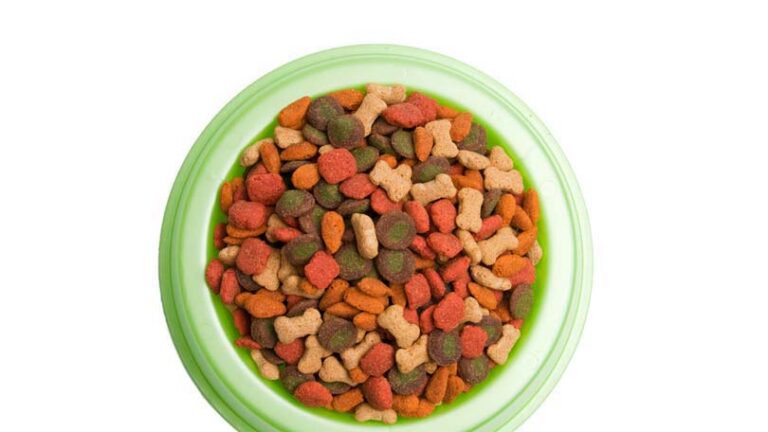Dogs and Chocolate – Why Does it Make them Sick?
We live in a chocolate society. Chocolate milkshakes, hot chocolate, chocolate cookies, chocolate breakfast cereal, chocolate cake, chocolate bunnies, chocolate Santa, chocolate ghosts, and even just plain, scrumptious, mouth-watering chocolate. Every candy bar comes coated in it and most ice cream bars are dipped in it. Chocolate is even sold as a mood elevator and aphrodisiac, releasing the same endorphins as being in love.
However, we also live in a doggy society. They too are everywhere, in all shapes and forms, sizes and colors. Dogs are part of our families; they are our friends, our protectors, and fulfill a significant role in many people’s lives.
As two important parts of our society, they overlap at times – take the chocolate Labrador for example. But normally, chocolate and dogs are a deadly combination and the leading poison seen in the veterinary industry. Around every major chocolate-based holiday, the number of calls that come into a normal veterinary hospital that start with the words “my dog just ate a box of chocolates & sky rockets”.
Chocolate and dogs are a potentially lethal combination, often requiring immediate veterinary intervention.
Why is Chocolate Poisonous for Dogs?
Chocolate contains theobromine and caffeine – both toxic to our canine friends. Theobromine is found in the cacao plant as well as the coffee bean, tea plant, the cola nut, and guarana and acai berries. It is a bitter alkaloid, giving unsweetened chocolate the painfully harsh taste.
Caffeine and theobromine are related alkaloids, similar in make up. However, they cause different reactions within the human body. Theobromine has a lesser effect on the central nervous system then caffeine yet it stimulates the heart and cardiovascular system to a greater degree, working as a vasodilator to decrease blood pressure as well as a diuretic, aiding the body in removing unnecessary water from the heart and tissues. In humans, side effects of theobromine ingestion include sleeplessness, tremors, restlessness, anxiety, increased urination, loss of appetite, nausea, and vomiting.
Humans can safely consume theobromine because of the speed in which their liver can metabolize the substance. Dogs, unfortunately, cannot metabolize it as quickly, with the toxin remaining in their bloodstream for up to twenty hours.
How Much Chocolate is Poisonous to Dogs?
There are a few things that must be taken into consideration when discussing the toxic levels of theobromine in dogs:
- The type of chocolate. Pure cocoa contains approximately 20.3 mg/gram of theobromine where as white chocolate and carob products contain only trace amounts. Cocoa used in cooking, either in powder form or as unsweetened or semi-sweet baker’s chocolate, contain the highest levels of theobromine and are most often the cause of chocolate poisoning in dogs.
- Size of the dog. The lethal dose for theobromine poisoning in dogs is 100 to 200 mg per kilogram of body weight. Obviously small dogs are in greater danger from eating chocolate then large dogs.
- Level of toxicity. The ASPCA Poison Control Center states that 20 mg of theobromine per kilogram of body weight will cause mild signs of toxicity, severe symptoms are seen at 40 to 50 mg/kg and seizures occur at 60 mg/kg.
The rule of thumb is that any amount of chocolate and dogs do not mix. However, if your dog does accidentally ingest some chocolate, have these three pieces of information in front of you when you call your vet – type of chocolate, weight of your dog and how much they ate.
A rough guide to the amount of theobromine in various types of chocolate:
- Dry cocoa power – 800 mg of theobromine and caffeine per ounce
- Unsweetened baking chocolate – 440 mg of theobromine and caffeine per ounce
- Instant cocoa powder – 150 mg of theobromine and caffeine per ounce
- Dark sweet chocolate – 150 mg of theobromine and caffeine per ounce
- Milk chocolate – 64 mg of theobromine and caffeine per ounce
- White chocolate – 1.1 mg of theobromine and caffeine per ounce
For a lethal dose, a 10 lb Miniature Poodle would need to ingest 7 oz of milk chocolate, 3 oz of instant cocoa powder, 1 oz of unsweetened baking chocolate or under .5 oz of dry cocoa powder. A 70 lb German Shepherd, however, would need to consume approximately 3 lbs of milk chocolate, 1.3 lbs of instant cocoa powder, 7 oz unsweetened baking chocolate or 4 oz of cocoa powder.
Symptoms of Chocolate Toxicity in Dogs
Depending on the size of the dog, the amount of chocolate consumed and the type, symptoms of chocolate toxicity in dogs usually develop within four to twenty-four hours. These symptoms include:
- Vomiting
- Diarrhea
- Unquenchable thirst
- Increased urination
- Restlessness
- Lack of co-ordination or a drunken appearance
- Muscle twitching
- Hyperactivity
- Increased heart rate
- Raised blood pressure
- Seizures
- Hyperthermia (abnormally high body temperature)
- Coma
- Death
Symptoms continue to worsen as more theobromine is digested into the blood stream.
Treatment of Chocolate Toxicity in Dogs
If you know your dog has eaten chocolate or you suspect he has, contact your veterinarian as quickly as possible with the type of chocolate, the amount and your dog’s body weight. Depending on how far away you are from a clinic, the veterinarian may suggest you induce vomiting at home to lessen the amount of theobromine ingested.
Once at the clinic, they will induce vomiting if necessary, and administer activated charcoal, a substance that binds to the theobromine, limiting the amount that can be digested into the blood stream. Other treatment could include IV fluids to maintain hydration levels, medication to help support organ function, and, if necessary, anti-seizure medication.
The best treatment for chocolate toxicity in dogs is prevention! Many dogs love the taste of chocolate and will learn to seek it out. Keep all chocolate up off the ground (remove it from under the Christmas tree and use plastic eggs at your next Easter egg hunt) and safely stored in drawers or away from your dog. If you suspect your dog has eaten some chocolate, contact your veterinarian immediately – early treatment could save your best friend’s life!

Having discovered a fondness for insects while pursuing her degree in Biology, Randi Jones was quite bugged to know that people usually dismissed these little creatures as “creepy-crawlies”.







